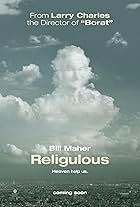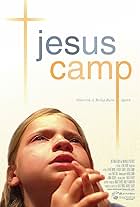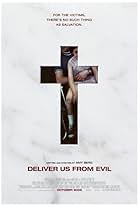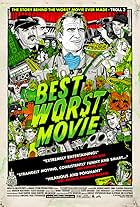Kirby Dick's exposé about the American movie ratings board.Kirby Dick's exposé about the American movie ratings board.Kirby Dick's exposé about the American movie ratings board.
- Awards
- 4 wins & 3 nominations
Clark Baker
- Self - Private Investigator
- (as Clark)
- Director
- Writers
- All cast & crew
- Production, box office & more at IMDbPro
Storyline
Did you know
- TriviaThe MPAA announced that starting in March of 2007, it will change their policy and allow filmmakers to cite other film's ratings as comparison. The MPAA will also provide information about the demographics of its board.
- Quotes
John Waters: I also heard on 'A Dirty Shame' - and I have no proof of this - that there were doctors involved... and that some of the kinkier terms, like felching and stuff, that they explained to the MPAA what felching meant. Now, I would like to have heard that because felching, no one has ever done felching. Felching is when you fuck someone and suck your own cum out of their asshole. Well, I know a lot of perverts and I don't know anyone who's done that.
- Crazy creditsAt the end credits a count of what the film shows: FUCKS(OR DERIVATIONS OF): 20 MOTHERFUCKERS: 3 HUMPS: 220 NIPPLES: 10 INTERCOURSE WITH PIE: 1 CARTOONS/PUPPETS IN SEXUAL POSITIONS: 15 SPLOSHING: 1 FELCHING: 0
- ConnectionsEdited into This Film Is Not Yet Rated: Deleted Scenes (2009)
- SoundtracksAppeals Members
Written and Performed by Michael S. Patterson (ASCAP)
Courtesy of Absynthe Zelery Music (ASCAP)
Featured review
Fast paced, absorbing, at times comical exposé of the Motion Picture Association of America (MPAA) film rating system. While it is in name a "voluntary" system, i.e., a filmmaker can choose whether to submit a film to MPAA for rating purposes, in fact the theater chains that promise wide exposure and revenues for a film they screen will rarely touch a movie that is unrated or that receives the most restrictive rating, NC-17 (no "child" 17 or younger admitted under any circumstances.) The ratings are allegedly created by a panel of "average" parents of school age children, according to long time MPAA CEO, Jack Valenti, and other officials. There are no experts, e.g., no psychologists who study the impact of media on kids' attitudes and behavior. Panel members are selected by the rating committee chair, Joan Graves. Members' identities are kept secret to "avoid pressures" on their decision making.
Among other things, director Kirby Dick discovers that (a) there are no explicit criteria or guidelines for ratings; (b) ditto for selection of raters (who, if they work full time, receive annual salaries of $30,000); (c) one recent rater was childless; the children of several others were adults; (d) raters frequently discuss films with industry representatives, arguably the most important source of "pressure" on their decisions; (e) majority votes determine the recommended rating, but these votes are not binding; (f) in case of ties (there are eight voting members, including Ms. Graves), Ms. Graves also is empowered to cast a tie-breaking judgment; and (g) there is an appeals process.
However, the appeals board is composed exclusively of representatives of the major studios, distributors and exhibition chains, and rarely do they controvert the initial rating. This is no surprise, since the MPAA is entirely financed by the six largest studios (responsible for 90% of the films released domestically) and their conglomerate corporate media owners (who control 95% of all media outlets in the U.S.) Details of all rating board and appeal decisions are kept secret. To create the illusion of transparency, two clergymen, representing Roman Catholics and Protestants, always sit in as observers at appeals hearings. But they too are required not to disclose information on the appeal decision process.
Compared to a number of other rating systems that exist in various countries worldwide, the MPAA approach is by far the most secretive, and contrary to every other system, it is far more restrictive of sexual content than violence. Kirby Dick also cites examples that strongly suggest greater bias (i.e., greater likelihood of getting an NC-17 rating) against films depicting gay/lesbian sex scenes than those with heterosexual scenes.
Dick mixes illustrative film clips, talking heads, historical notes on the evolution of ratings, a rundown on what appear to be the implicit criteria for ratings; a stalking investigation to discover the identities of raters and appeal board members; and his personal experience in submitting an earlier cut of this film to MPAA for a rating (it got an NC-17 for sexually explicit content). Atom Egoyan, Kimberly Peirce, Kevin Smith and John Waters are among independent filmmakers interviewed by Dick. Ms. Peirce raises the interesting notion that MPAA ratings may also be more biased against films with scenes connoting female sexual pleasure than films showing male pleasure.
Dick generally maintains a tone of wry humor, especially in showing us his day-by-day use of private investigators to track down and identify raters. There's almost a Keystone Cops flavor to the stalking antics of the women PIs he has hired, with Dick along for the ride. His re-creation of phone conversations with Joan Graves and the MPAA Chief Counsel, when he protests the rating of his own film, are also as funny as they are biased. (He uses animation to visually depict these officials as mean spirited grumps in split screen scenes that simultaneously show real time footage of Dick himself at his end of these conversations.) Dick is less successful in his review of information suggesting the implicit or inferable criteria raters use, based on film content and actual ratings. He zips through too much information too fast for anybody to absorb. Still, this is a bravura piece of advocacy journalism. The film gives us ample information to conclude that the MPAA system of corporate control of ratings, when combined with control of film distribution and screening based on these ratings, effectively results in a clever censorship arrangement that would certainly violate First Amendment rights were it not for the illusion of "voluntariness" that is perhaps the most ingenious aspect of this system.
Anybody is free to make a film about anything, of course. But whether it will be screened, or even advertised, let alone able to return revenues sufficient to defray the costs of production, is a very carefully controlled process. And what is the point of making a film that will not be seen? As in political campaigning, free speech is hardly free. Those with the most corporate clout rule both the campaigning and movie making businesses. What's worse, in our characteristic American manner, we shrink puritanically from sex on screen but remain inured to the effects of violence. My grade: 7.5/10 (low B+) (Seen on 09/10/06)
Among other things, director Kirby Dick discovers that (a) there are no explicit criteria or guidelines for ratings; (b) ditto for selection of raters (who, if they work full time, receive annual salaries of $30,000); (c) one recent rater was childless; the children of several others were adults; (d) raters frequently discuss films with industry representatives, arguably the most important source of "pressure" on their decisions; (e) majority votes determine the recommended rating, but these votes are not binding; (f) in case of ties (there are eight voting members, including Ms. Graves), Ms. Graves also is empowered to cast a tie-breaking judgment; and (g) there is an appeals process.
However, the appeals board is composed exclusively of representatives of the major studios, distributors and exhibition chains, and rarely do they controvert the initial rating. This is no surprise, since the MPAA is entirely financed by the six largest studios (responsible for 90% of the films released domestically) and their conglomerate corporate media owners (who control 95% of all media outlets in the U.S.) Details of all rating board and appeal decisions are kept secret. To create the illusion of transparency, two clergymen, representing Roman Catholics and Protestants, always sit in as observers at appeals hearings. But they too are required not to disclose information on the appeal decision process.
Compared to a number of other rating systems that exist in various countries worldwide, the MPAA approach is by far the most secretive, and contrary to every other system, it is far more restrictive of sexual content than violence. Kirby Dick also cites examples that strongly suggest greater bias (i.e., greater likelihood of getting an NC-17 rating) against films depicting gay/lesbian sex scenes than those with heterosexual scenes.
Dick mixes illustrative film clips, talking heads, historical notes on the evolution of ratings, a rundown on what appear to be the implicit criteria for ratings; a stalking investigation to discover the identities of raters and appeal board members; and his personal experience in submitting an earlier cut of this film to MPAA for a rating (it got an NC-17 for sexually explicit content). Atom Egoyan, Kimberly Peirce, Kevin Smith and John Waters are among independent filmmakers interviewed by Dick. Ms. Peirce raises the interesting notion that MPAA ratings may also be more biased against films with scenes connoting female sexual pleasure than films showing male pleasure.
Dick generally maintains a tone of wry humor, especially in showing us his day-by-day use of private investigators to track down and identify raters. There's almost a Keystone Cops flavor to the stalking antics of the women PIs he has hired, with Dick along for the ride. His re-creation of phone conversations with Joan Graves and the MPAA Chief Counsel, when he protests the rating of his own film, are also as funny as they are biased. (He uses animation to visually depict these officials as mean spirited grumps in split screen scenes that simultaneously show real time footage of Dick himself at his end of these conversations.) Dick is less successful in his review of information suggesting the implicit or inferable criteria raters use, based on film content and actual ratings. He zips through too much information too fast for anybody to absorb. Still, this is a bravura piece of advocacy journalism. The film gives us ample information to conclude that the MPAA system of corporate control of ratings, when combined with control of film distribution and screening based on these ratings, effectively results in a clever censorship arrangement that would certainly violate First Amendment rights were it not for the illusion of "voluntariness" that is perhaps the most ingenious aspect of this system.
Anybody is free to make a film about anything, of course. But whether it will be screened, or even advertised, let alone able to return revenues sufficient to defray the costs of production, is a very carefully controlled process. And what is the point of making a film that will not be seen? As in political campaigning, free speech is hardly free. Those with the most corporate clout rule both the campaigning and movie making businesses. What's worse, in our characteristic American manner, we shrink puritanically from sex on screen but remain inured to the effects of violence. My grade: 7.5/10 (low B+) (Seen on 09/10/06)
- roland-104
- Sep 13, 2006
- Permalink
- How long is This Film Is Not Yet Rated?Powered by Alexa
Details
- Release date
- Countries of origin
- Language
- Also known as
- Los censores de Hollywood
- Filming locations
- Production companies
- See more company credits at IMDbPro
Box office
- Gross US & Canada
- $306,845
- Opening weekend US & Canada
- $30,664
- Sep 3, 2006
- Gross worldwide
- $347,240
- Runtime1 hour 38 minutes
- Color
- Sound mix
- Aspect ratio
- 1.85 : 1
Contribute to this page
Suggest an edit or add missing content

Top Gap
What is the Brazilian Portuguese language plot outline for This Film Is Not Yet Rated (2006)?
Answer






























